Some Workers Have Been Hit Much Harder than Others by the Pandemic
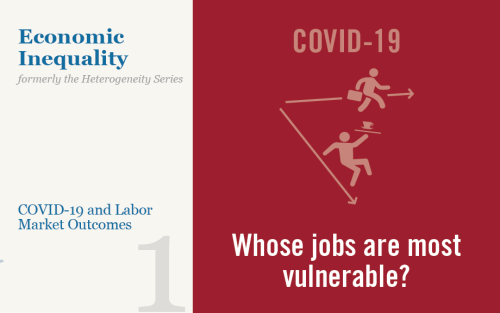
Abel and Deitz look at the outsized impact of the COVID-19 pandemic on some workers, particularly those who are in lower-wage jobs, without a college degree, female, minority, and younger.
Inequality in U.S. Homeownership Rates by Race and Ethnicity
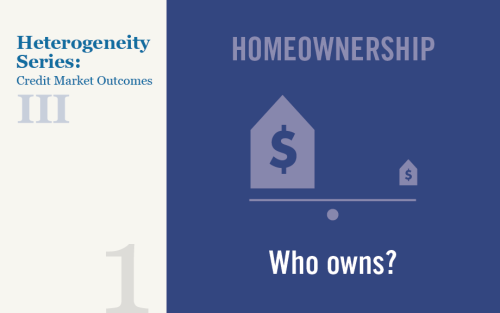
Homeownership has historically been an important means for Americans to accumulate wealth—in fact, at more than $15 trillion, housing equity accounts for 16 percent of total U.S. household wealth. Consequently, the U.S. homeownership cycle has triggered large swings in Americans’ net worth over the past twenty-five years. However, the nature of those swings has varied significantly by race and ethnicity, with different demographic groups tracing distinct trajectories through the housing boom, the foreclosure crisis, and the subsequent recovery. Here, we look into the dynamics underlying these divergences and explore some potential explanations.
Growth Has Slowed across the Region
At today’s regional economic press briefing, we highlighted some recent softening in the tri-state regional economy (New York, Northern New Jersey, and Fairfield County, Connecticut)—a noteworthy contrast from our briefing a year ago, when economic growth and job creation were fairly brisk. We also showed that Puerto Rico and the U.S. Virgin Islands, which are part of the New York Fed’s district, both continue to face major challenges but have made significant economic progress following the catastrophic hurricanes of 2017.
Who Borrows for College—and Who Repays?
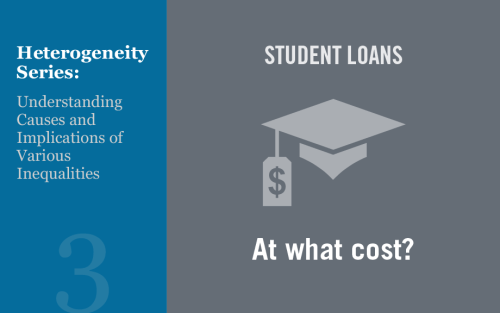
Student loans are increasingly a focus of discourse among politicians, policymakers, and the news media, resulting in a range of new ideas to address the swelling aggregate debt. Evaluating student loan policy proposals requires understanding the challenges faced by student borrowers. In this post, we explore the substantial variation in the experiences of borrowers and consider the distributional effects of various policy options.
Introduction to Heterogeneity Series: Understanding Causes and Implications of Various Inequalities
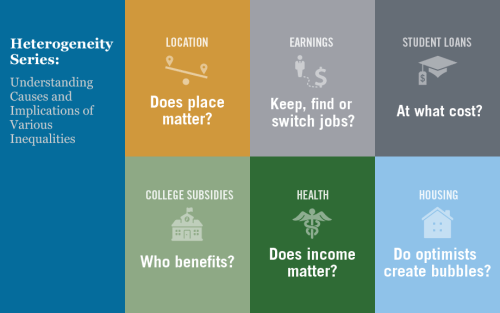
Economic analysis is often geared toward understanding the average effects of a given policy or program. Likewise, economic policies frequently target the average person or firm. While averages are undoubtedly useful reference points for researchers and policymakers, they don’t tell the whole story: it is vital to understand how the effects of economic trends and government policies vary across geographic, demographic, and socioeconomic boundaries. It is also important to assess the underlying causes of the various inequalities we observe around us, be they related to income, health, or any other set of indicators. Starting today, we are running a series of six blog posts (apart from this introductory post), each of which focuses on an interesting case of heterogeneity in the United States today.
The Sustainability of First‑Time Homeownership

In this post we take up the important question of the sustainability of homeownership for first-time buyers. The evaluation of public policies aimed at promoting the transition of individuals from renting to owning should depend not only on the degree to which such policies increase the number of first-time buyers, but also importantly on whether these new buyers are able to sustain their homeownership. If a buyer is unprepared to manage the financial responsibilities of owning a home and consequently must return to renting, then the household may have made little to no progress in wealth accumulation. Despite the importance of sustainability, to date there have been no efforts at measuring the sustainability of first-time homeownership. We provide an example of a first-time home buyer sustainability scorecard.
Who’s on First? Characteristics of First‑Time Homebuyers

In our previous post, we presented a new measure of first-time homebuyers. In this post, we use this improved measure to describe the characteristics of first-time buyers and how those characteristics change over time. Having an accurate assessment of first-time buyers is important given that the aim of many housing policies is to support the transition from renting to owning. A proper assessment of these housing policies requires an understanding of the impact of these policies on the share of first-time buyers and the characteristics of these buyers. Our third post will directly examine the sustainability of homeownership by first-time buyers.
A Better Measure of First‑Time Homebuyers

Much of the concern about affordable homeownership has focused on first-time buyers. These buyers, who are often making the transition from renting to owning, can find it difficult to save to meet down-payment requirements; this is particularly true in those areas where rent takes up a significant portion of a household’s monthly income. In contrast to first-time buyers, repeat buyers can typically rely on the equity in their current house to help fund the down payment on a trade-up purchase; they also have an easier time qualifying for a new mortgage if they’ve successfully made payments on a prior mortgage, thereby improving their credit score. Despite the policy focus on first-time buyers, reliable data on these buyers do not exist. In this initial post in a three-part series, we introduce a better measure of first-time buyers and examine the dynamics of this group over the past seventeen years. In our next post, we will describe the characteristics of first-time buyers. We will conclude the series by examining the sustainability of homeownership for first-time buyers.














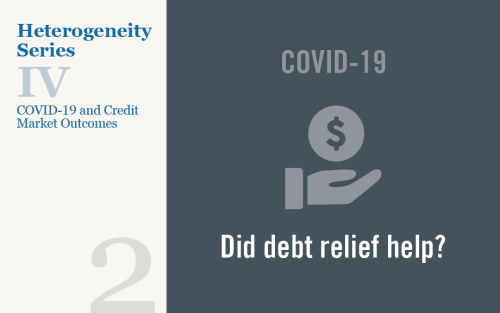
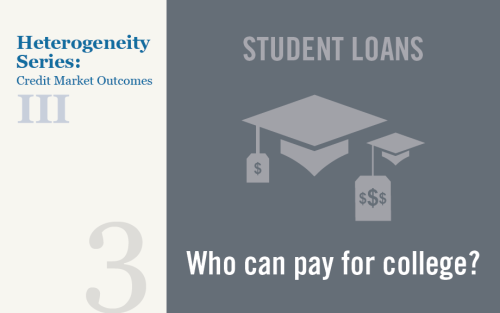
 RSS Feed
RSS Feed Follow Liberty Street Economics
Follow Liberty Street Economics